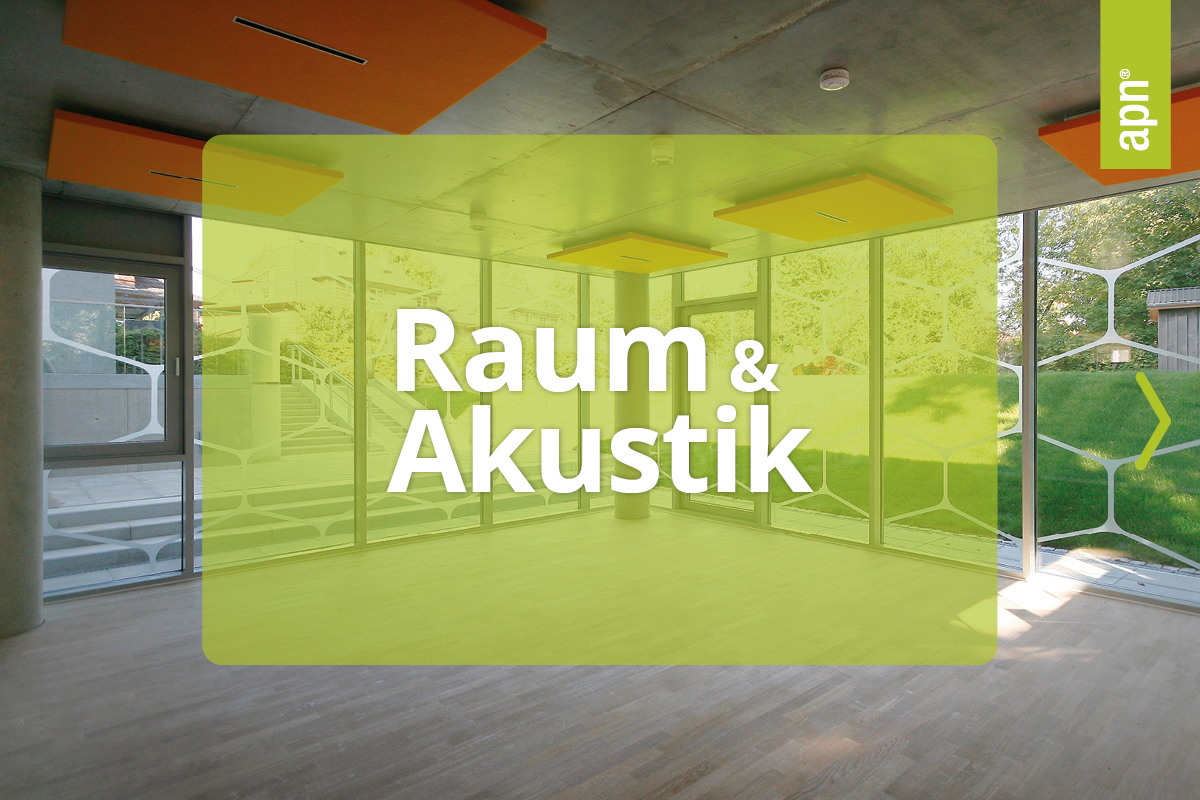Room & acoustics
Understanding the entirety of the room
A room is much more than just a physical space defined by walls, floors and ceilings. It is a living interplay that influences our perception and behavior. The way a space is designed can shape our mood, our productivity and even our social interactions. Every space serves as an outer shell, a framework for the events that take place there. It should therefore be considered in a differentiated way based on its geometry, materials and usage characteristics.
The complexity of events taking place in rooms
The complexity of the events that take place in rooms results from a variety of factors that influence behavior and interactions within a room. We would like to break down some aspects for you below:
- Physical properties of the room: The size, shape and materials used in a room have a significant influence on the propagation of sound, light and temperature. These physical properties have a direct impact on the behavior of people in the room.
- Use and function: Different spaces fulfill different purposes, be it living, working or leisure. The specific use of a space determines which activities take place there and how people perceive and use the space.
- Social interactions: Spaces serve as places for social interactions. The design of the space can significantly influence the way people interact with each other. For example, open spaces encourage communication and collaboration, while enclosed spaces offer privacy.
- Cultural and psychological factors: The perception and use of spaces is strongly influenced by cultural and individual psychological factors. Different cultures have different ideas about how spaces should be used and designed.
- Technological influences: Modern technologies such as smart home systems and digital means of communication are fundamentally changing the way rooms are used. These technologies can improve the functionality and efficiency of rooms, but they also bring new challenges.
- Dynamic changes: Rooms are not static structures; they change over time. Changes in use, renovations, revitalizations and adaptations to new requirements all contribute to complexity.
The company shapes the space
Even if the events that take place in rooms are complex: Your company shapes the space – not the space shapes your company! Think holistically!
The trend towards agile workplaces requires a comprehensive restructuring of both the company organization and the working environment. Given that the average useful life of office space is only three years, continuous restructuring and innovative design approaches are essential.
Careful planning is crucial here. Aspects such as space planning, functionality, digitalization, interior design and room acoustics must be harmonized. Every room has specific acoustic requirements that call for flexible and customized measures. We at apn® accept this challenge and are committed to revolutionizing room acoustics.
Understanding room acoustics
As a sub-aspect of acoustic science, room acoustics examines the effects of the structural conditions of a room on the sound events that take place there. This includes conversations between teams and colleagues, telephone calls, keyboard noises, technical devices and many other sources of noise.
At apn®, this term is also linked to people’s personal interaction with the room. As people move through a room and therefore also the sound sources, it is crucial to take these diverse and dynamic sound sources into account. Just as rooms are viewed in three dimensions, sound propagates in three dimensions. It can also bend around obstacles and penetrate through materials.
The focus here is on speech intelligibility and limiting the reverberation time. To achieve this, the right balance must be found between room attenuation (absorption) and diffusivity (dispersion) of the sound.
Synergies for optimum room acoustics
The new, flexible workplaces place high demands on acoustic design. A well-founded analysis of acoustic requirements is essential in order to create future-proof working environments. Cooperation between manufacturers, planning offices and acoustic engineers is of crucial importance here. Only through close cooperation can innovative solutions be developed that meet the specific requirements of each room.
Well-designed and flexible room acoustics play a central role in modern working environments and are far more than just a “nice-to-have”. Only when all the details come together does the room find its sound and become a lively place for collaboration.
Feel free to contact ourcrew and let’s redesign your sound together!
